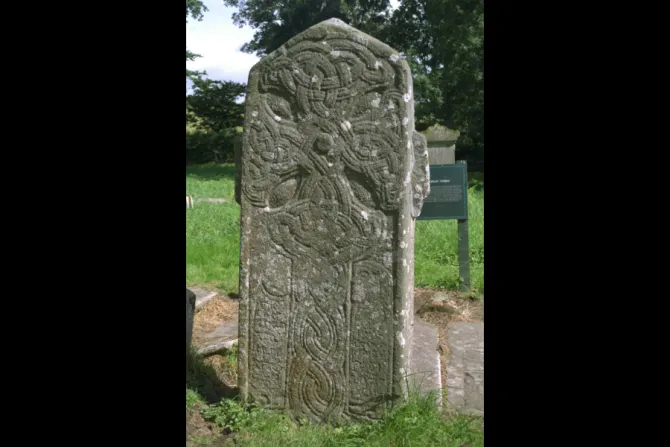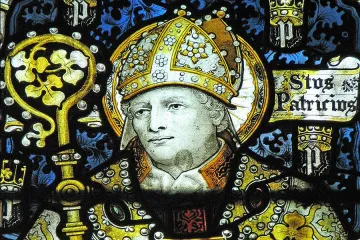Dublin, Ireland, Dec 6, 2018 / 03:01 am
A unique Irish cross marking the 1,400-year-old grave of a Catholic saint is in danger of destruction due to erosion, and the local community is seeking help to restore the "icon of Ireland's early Christian heritage."
St Mura's Cross is carved into a slab nearly seven feet tall that marks the grave of St. Mura, the first abbot of a sixth-century monastery in the far north of Ireland in what is now County Donegal. The monastery, one of Ireland's earliest, was founded by St. Colmcille less than a century after the death of St. Patrick. It became a center of religion and scholarship and its surrounding settlements gave birth to the town of Fahan, where nearly 600 people live today.
A nearby gable wall must be repaired before preservation efforts on St. Mura's Cross must begin.
"Cracks have appeared on the wall and if we don't stabilize that it could fall. If it does, it will fall on the cross and it will be destroyed forever," Colm Toland of the Fahan Heritage Group told The Irish News in November.
St. Mura, said to be a descendant of the Irish king Niall of the Nine Hostages, died in 645 at the age of 94. He became the patron saint of the O'Neil Clan, whose leaders were among the High Kings of Ireland. His feast day is observed March 12.
Both a Catholic church and a Church of Ireland church in the Fahan area are named for the saint.
The cross is the only one of its kind to bear an inscription in Greek: "Glory and honor to the Father, the Son and Holy Spirit". It is considered a unique inspiration of the Irish High Cross artistic tradition of massive and ornately carved stone crosses.
The saint's cross was carved sometime from the sixth to the tenth century. The gable wall was built in 1608, using stones from the original monastery, the Irish state broadcaster RTE News reports. It is surrounded by a graveyard that includes St. Mura's tomb.
The monastery and village were sacked by the Vikings twice in the middle ages, though the site's current ruins date to the 17th century. Some monastery artifacts are now in museums in Dublin and London.
Fahan's heritage group is seeking support to protect the cross and the nearby church gable ruins. The gable is one of the distinctive landmarks of the village and a favorite stop for tourists and wedding parties, Fahan Heritage Group said in its YouTube video "Save St. Mura's Cross."
The stone-carved cross was distinctive for centuries, but now it has faded due to severe erosion attributed to acid rain or other environmental factors. The carving and Greek inscription are almost illegible.
"One thing we might have to consider is moving the cross to an indoor location and replacing it with a replica outside," Toland said. "That way we could protect if from whatever environmental or pollution influences which are eroding it."
Backers of the restoration include individuals from local community heritage and church societies, including historians, archaeologists, and architects.
They have launched an online fundraiser seeking an additional 15,000 Euro, about $17,000, to add to a startup grant from the Heritage Council of Ireland and funds from other sources.
"If left unprotected we will have lost an icon of Ireland's earliest Christian period," said the backers of the "Save Saint Mura's Cross" project on the group fundraiser site fundit.ie. The fundraiser will close in mid-January.
(Story continues below)
They and the wider community are "determined to conserve the local history and heritage of Saint Mura's monastic settlement from which the village itself grew."



